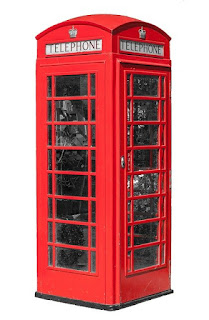Telephone System- Telephone Components
We will discuss the Telephone system starting from the components of the Telephone system. Later we will discuss telephone system and telephone exchange working in railways
So,
What are the different types of telephone systems?
What are the major components of the telephone system?
What is the working principle of a Telephone system?
Principles of Telephony:
Telephony provides a means of sending information through human speeches when required between two persons situated at a distance apart.
In line telephony, the information is sent through the medium of line conductors between them.
Telephones:
The apparatus that is used for transmitting and receiving speech signals are called ”Telephones” and the persons who use them for sending information between them are called “Subscribers”.
The telephone transmitter and telephone receiver must be such that the conversion from speech into electrical currents and vice-versa be perfect i.e. free from frequency distortion, amplitude distortion.
What is a telephone exchange?
Telephone exchange:
It is a place where switching between two subscribers is done either manually or electronically. In addition to switching, signalling and controlling are also done at “Exchange”.
Human speech and its transmission:
Human speech consists of a large number of frequency components of different values between 0.3 to 3.4 kHz having different amplitudes and different phase relations between them.
Steps in Telephone transmission:
i) Conversion of speech into the electrical voice frequency currents at the transmitting end.
ii) Transmission of speech currents through media lines to the distant end.
As shown in Fig. above, when any subscriber speaks into the “Transmitter” of his telephone set, his speech is converted into oscillatory electrical currents and then it is sent through lines/Transmission lines and then exchange to the other subscriber’s telephone set where it is converted into speech sounds by “Receiver”.
One pair of conductors are required between two subscribers.
All the line conductors from different subscriber’s premises are concentrated at a place known as the telephone exchange.
Telephone Cables :
Cables used in Telephony: In line telephony speech currents are carried by lines first into the exchange and there to the receiver of the called subscriber through separate pair of lines. The type of transmission lines used is generally insulated copper conductors, which are packed into a bunch of 10, 20, 50 or 100 pairs called “Telephone cables”.
Copper wires are used for Telephony transmission due to, less attenuation and less distortion provided that the insulation resistance of a conductor is within the given values.
Basics of Telephone Exchange:
Basics of Telephone Exchange: Telephone Exchange is a place where switching between two subscribers is done either manually or electronically. In addition to switching, signalling and controlling are also done at an exchange.
It consists of the following functional blocks:
a) Main Distribution Frame with protective devices.
b) Card Frame.
c) Motherboard.
d) Power supply panel with protective devices
We will discuss Telephone Exchange in detail in the next post.
Some Interesting Books on Railways








0 Comments
You can give your Suggestions and feedback here